
This was a a learning module for 3rd-grade students in 4-H that introduced the concept of digital agriculture and what its constituent components, digital and agriculture, mean in terms familiar to the learners.
- Responsibilities: Instructional Design, eLearning Development, Supplemental Content Development, Multimedia Design and Development using a combination of traditional and generative AI techniques
- Target Audience: 3rd grade 4-H students
- Tools Used: Articulate Storyline, Krita, Reallusion Cartoon Animator, Adobe Premiere, Generative AI
- Budget: Low
- Client: Purdue University Extension Services
- Year: 2024
Overview
As part of the larger and ongoing Digital Agriculture Project, Purdue Extension educators requested an online asynchronous learning module introducing digital agriculture to 3rd-grade learners involved in 4-H.
Agriculture continues to play a substantial and increasingly important role in human society around the globe. It is vital that upcoming students understand and develop an appreciation for agriculture and its role in solving problems of global interests. The goal is to enhance interest in agriculture in parallel with the sciences in upcoming students. This introductory module was meant to serve as a prequel to all of the subsequent digital agriculture topics targeting higher grade levels..
The overall Digital Agriculture project serves an audience spanning a wide range of grade levels. As one of the modules targeting elementary-level learners, this introductory module was designed to present content in a low text, high graphic format. With the goals of topic introduction and interest establishment, this approach lends itself to better engagement with younger learners.
The client agreed with my approach, feeling their learners for this topic would be better served by limiting the cognitive load associated with large amounts of otherwise novel content.
Project Origins
{Optional summary of how the project came to be and what influenced design decisions or tools}
Design Approach
{Optional summary of the justifications for the basis of the design. May include problems identified, theories used, project specific definitions, and sample integrated content – a few lines to several paragraphs}
Process
This project focused on relating agriculture to the everyday lives of younger learners, and introducing digital concepts in a way they may easily understand. A major hurdle was the extensive development of relevant graphical media to support the specialized topic matter. Once this was completed, the development of the final eLearning product was fairly straightforward.
Instructional Design
Working with the client, we identified the primary topics best suited for learner’s needs when getting started with digital agriculture in 4-H.
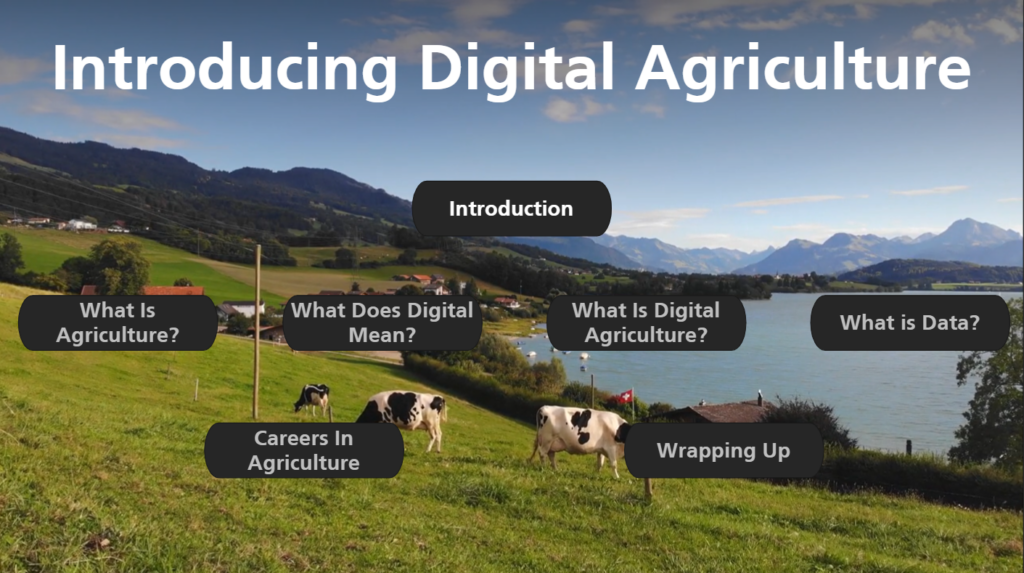
Each of these topics were fleshed-out through my own content research. Specific attention was given to agricultural applications related to youth interests and needs, and impacts they may have on their lives. Where possible, examples were placed into the agricultural context.
Text-Based Storyboard
I developed a detailed text-based storyboard, expanding on the topical outline, that followed the progression of the learner through various topic areas. This narrative outline established content scenes and described the presentation of individual sub-topics. This also served as the draft for module narration graphic design, and user interactions. I shared with with this this for content approval and feedback. Afterward, this expanded into a graphical storyboard.
Prototype
From the graphic storyboard and the draft narrative, media development began to produce topic-specific graphics, actors, and scenes. I completed initial scene design for select topics.
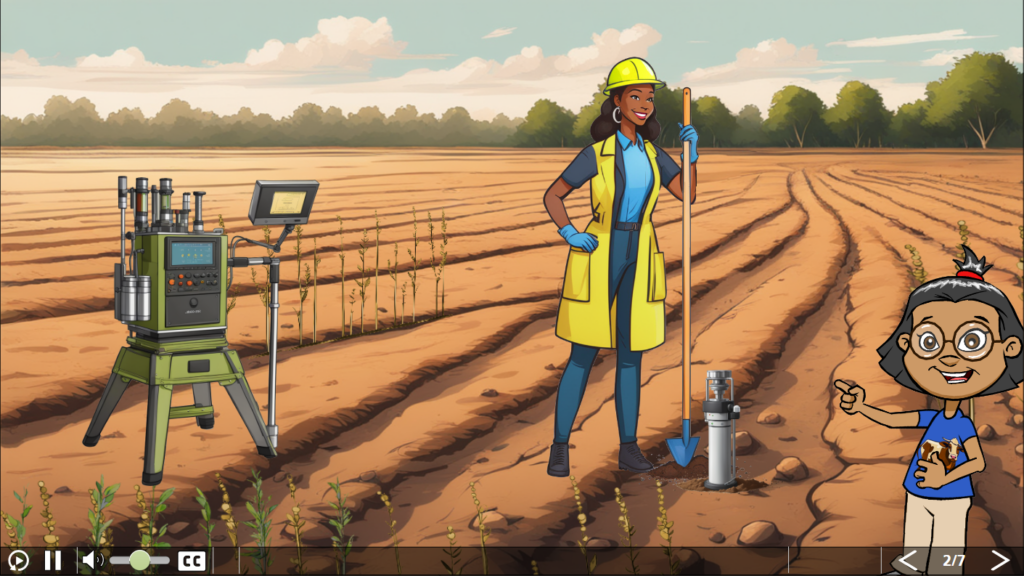
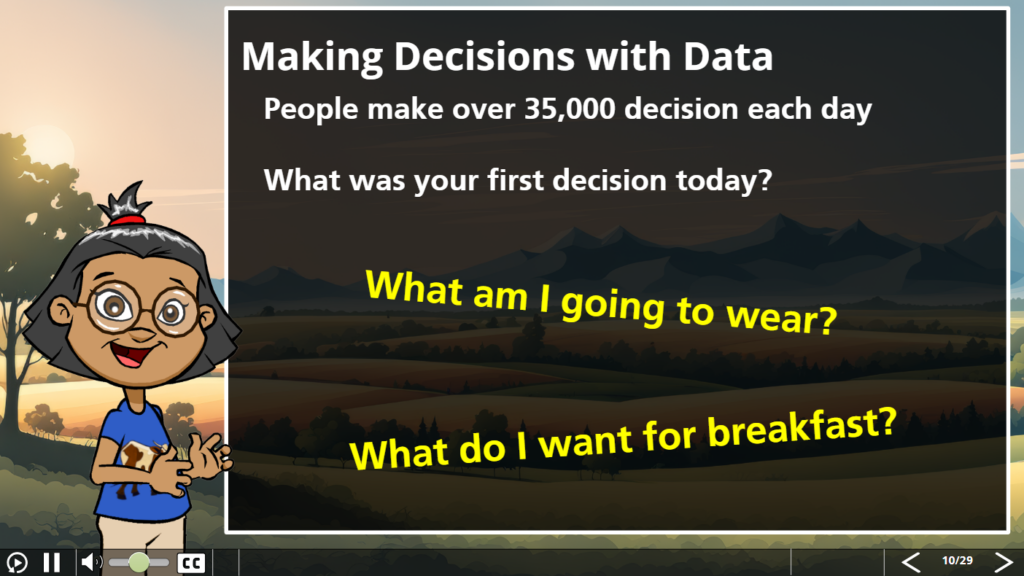
I also developed various interactive activities to improve learner engagement. These were submitted to the client for evaluation prior to full module completion.
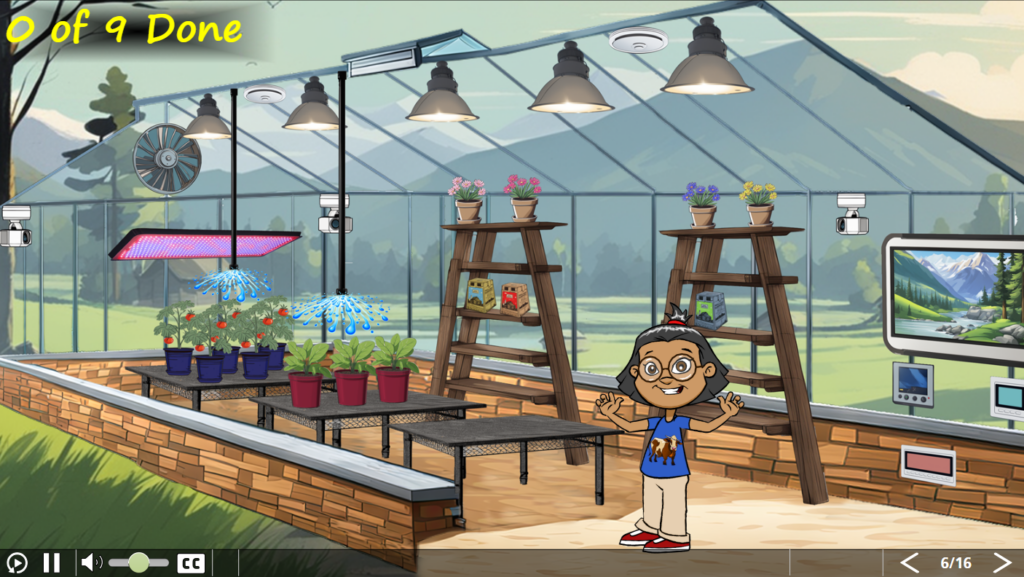
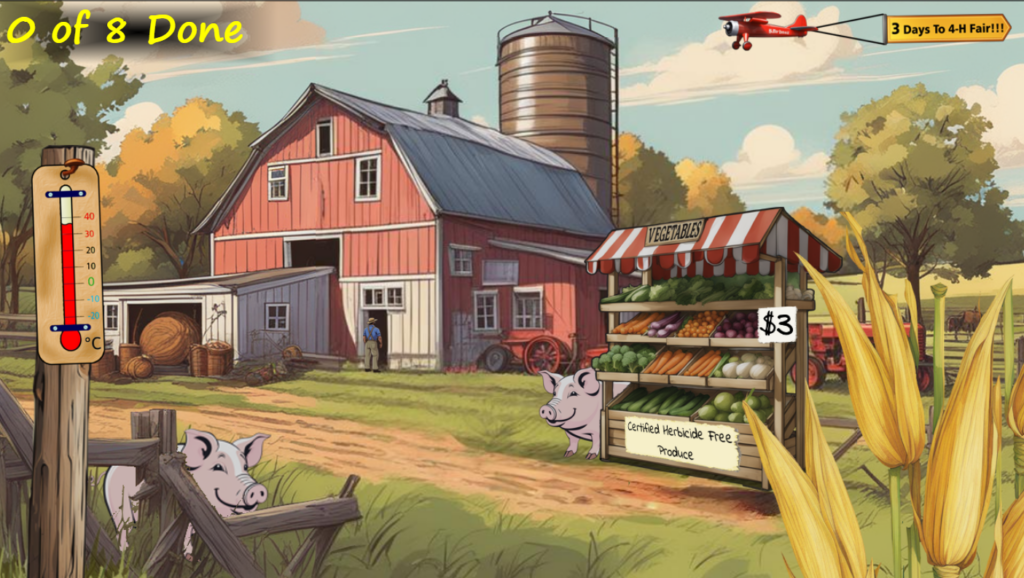
The client provided approval on look and feel, as well as interactive scope.
Final Product
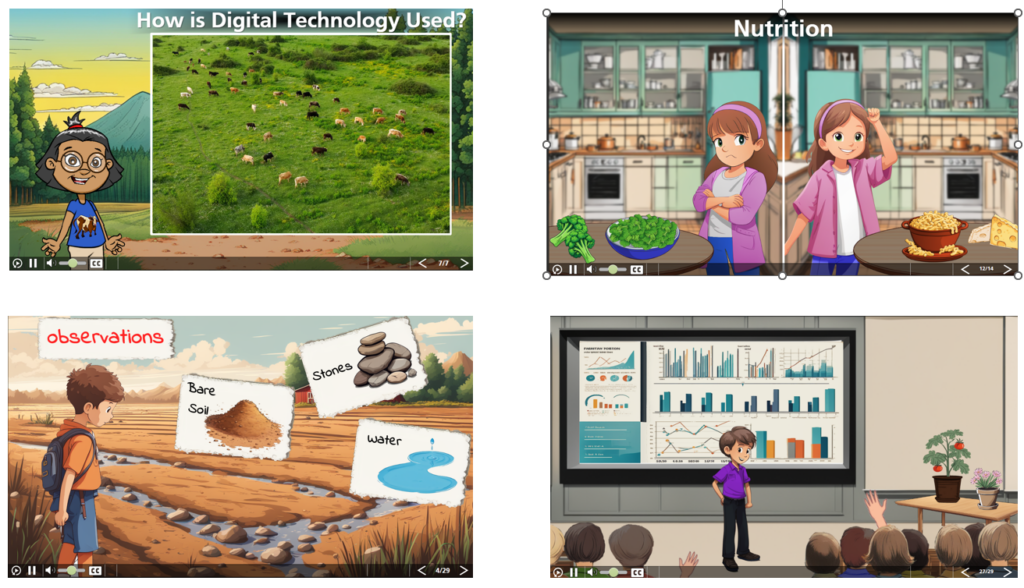
Final development of media content, narration scripts, and interactions followed client approval of prototypes. The detailed storyboards facilitated a streamlined development process.
Client Testimonial
{Optional paragraph summarizing client feedback or comments on final product}
Results and Takeaways
The final product is under evaluation with educators and target audience. Awaiting follow-up feedback and adjustment requests.
Since agriculture is a rapidly growing and increasingly important field, this module should provide a vital springboard to introduce younger learners to agricultural and technological topics, readying them to engage in advanced science and agriculturally-based disciplines.
I enjoyed creating this story-based module and I believe it will help engage younger learners more effectively than traditional text and video-based modules. A fine line exists between motivational and educational learning design. I strive to encompass both of these into my instructional design work.